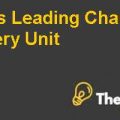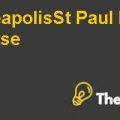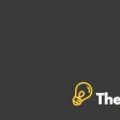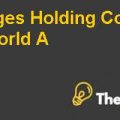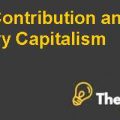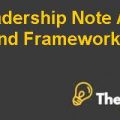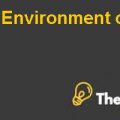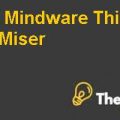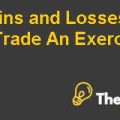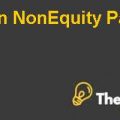Corporate Governance
Company structures are value-neutral creations; these are actions that business takes which have positive or negative impacts (Punit, 2012). Nike’s actions with respect to corporate governance, such as first mover to join hands with RED, a non-profit organization to embrace sustainability brings Nike in lime light for being a “good firm” that follows corporate governance (Punit, 2012).
Corporate governance includes the following three components each of which describe the standard that should be followed. Corporate governance is all about being responsible while operating the corporate sector. Below each of the accounting theory will be analyzed such as, to what extent Nike is following each of the theories and which of them is most pervasive in Nike’s case.
n Agency Theory
Agency theory refers to the relationship of the principal (owner) to the agent (manager). This incorporates responsibilities on the agent’s part to maximize on the strategic aims of the owner (Anonymous, 2014). This however, does not mean that the agent opts for unethical ways of maximizing owner’s welfare, as evident by loyal agent’s theory. Instead, it means that the agent, on behalf of the manager, must pursue options that are ethical and responsible to increase shareholders’ interests. Further on this note, agency theory has its own inherent risks that come along, and are known as agency costs. These costs are the costs that relate to asymmetric information, and have adverse affects on the owner if the manager works only in his self-interest.
In the case of Nike, it is evident that they the firm uses agency theory to carry its operations. However, diversification is not seen in terms of the product offerings but yes is visible in the product silos. Over-diversification is a risk inherent in the agency theory when the manager tries to lower down its employment risk and intends to get a higher compensation. The managers at Nike seem to work in co-operation with each other by following the strategic line of action to get the best out of their firm while retaining sustainability.
n Stewardship Theory
Stewardship theory asserts that the Steward (top executives) must work for the owner (principal). Stewardship theory focuses on more of a rational approach to seek profits (Pundit, 2014). Unlike the individualistic approach used by the Agency Theory, stewardship theory says that the reinforcement for top executives to work in the interests of their organization is to give them perks. Controls have to be limited, otherwise they can be counter-productive, and once the steward thinks that he is not trusted; then the stewardship theory can back fire and leave the owner’s efforts vain. Stewardship Theory is then helpful to use, when steward pro-organizational actions are best facilitated by the corporate governance structures and when they are given authoritative controls and discretion (Pundit, 2014). Nike’s top executives seem to have that discretionary power and they are also equipped with what Nike aims to achieve. Exhibit 1 shows the pros and cons of each of the above two theories are applicable in Nike’s case (Pundit, 2014).
n Sarbanes-Oxley
According to the Sarbanes-Oxley Act 2002, a firm must outsource audit services and report the financials according to the set forth standards in the Sarbanes Oxley act (Wikipedia, 2014). As Sarbanes Oxley Act is all about Accounting; it is therefore crucial for Nike to consider it title III in its reporting, which specifically focuses on corporate responsibility. Nike’s key competitive advantage for incorporating the environmental sustainability, by making jersey’s from the recycled plastic bottles and also minimizing the carbon foot print is the clear indication of Nike being socially responsible. However, the SOX requires Nike to express the costs and the benefits earned through their operations.
Internal Environment
The analysis of a company’s strengths and weaknesses is called SWOT analysis. The analysis of strengths and weaknesses is called internal analysis and the analysis of opportunities and threats is called external analysis (Philips, 12 edition). In this section we focus on the internal environment, that is, strengths and weaknesses.
Strengths:
Nike has retained a very strong brand image in the minds of its end users and is now head to head with Adidas and Puma. It seems to have highest sales and profits on a global scale and that it is also the favorite sport apparel of all time. It focuses on the control side of the footwear by making the studs grasp more on the pitch and prevent accidents which are its major strength. Moreover, the first mover advantage in taking the initiative of joining hands with RED (non-profit) organization to make sustainable product is something that has helped Nike to achieve the competitive landscape. Further, popularity of the logo, “Just do it” makes an aesthetic motivation in an athletic mind. Product differentiation is also one of its major strengths.
The supplier diversity that has been achieved through Nike is again a milestone achieved in the way to success. Nike manufactures majority of its.........................
This is just a sample partial case solution. Please place the order on the website to order your own originally done case solution.
The history of Nike, its economic strategy, and the industry in which it competes. The teaching goal is to ask the student to identify and assess the economic / technical strategies Nike. "Hide
on C. Roland Christensen, David S. Rikert Source: Harvard Business School 31 pages. Publication Date: October 16, 1984. Prod. #: 385025-PDF-ENG

